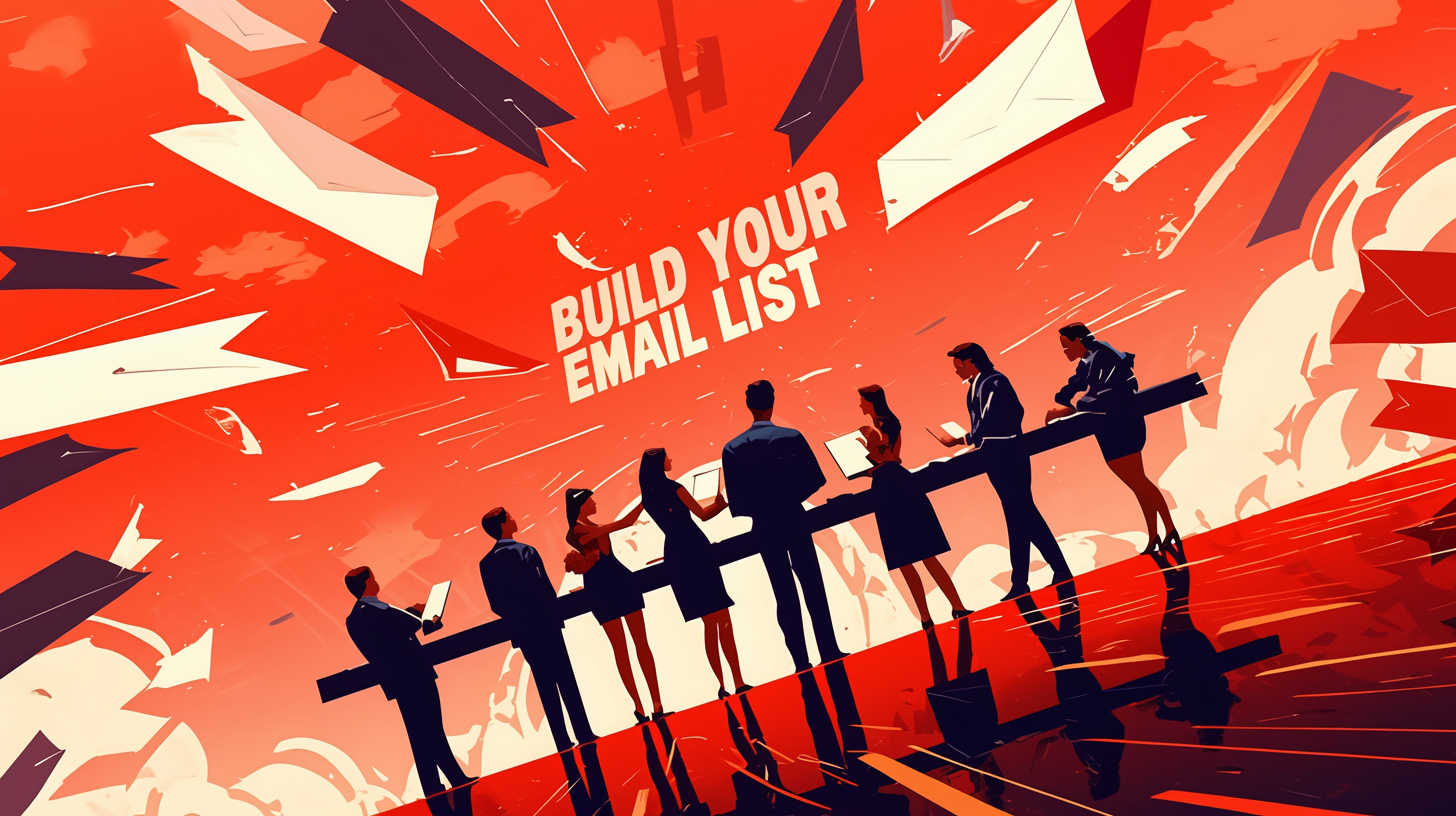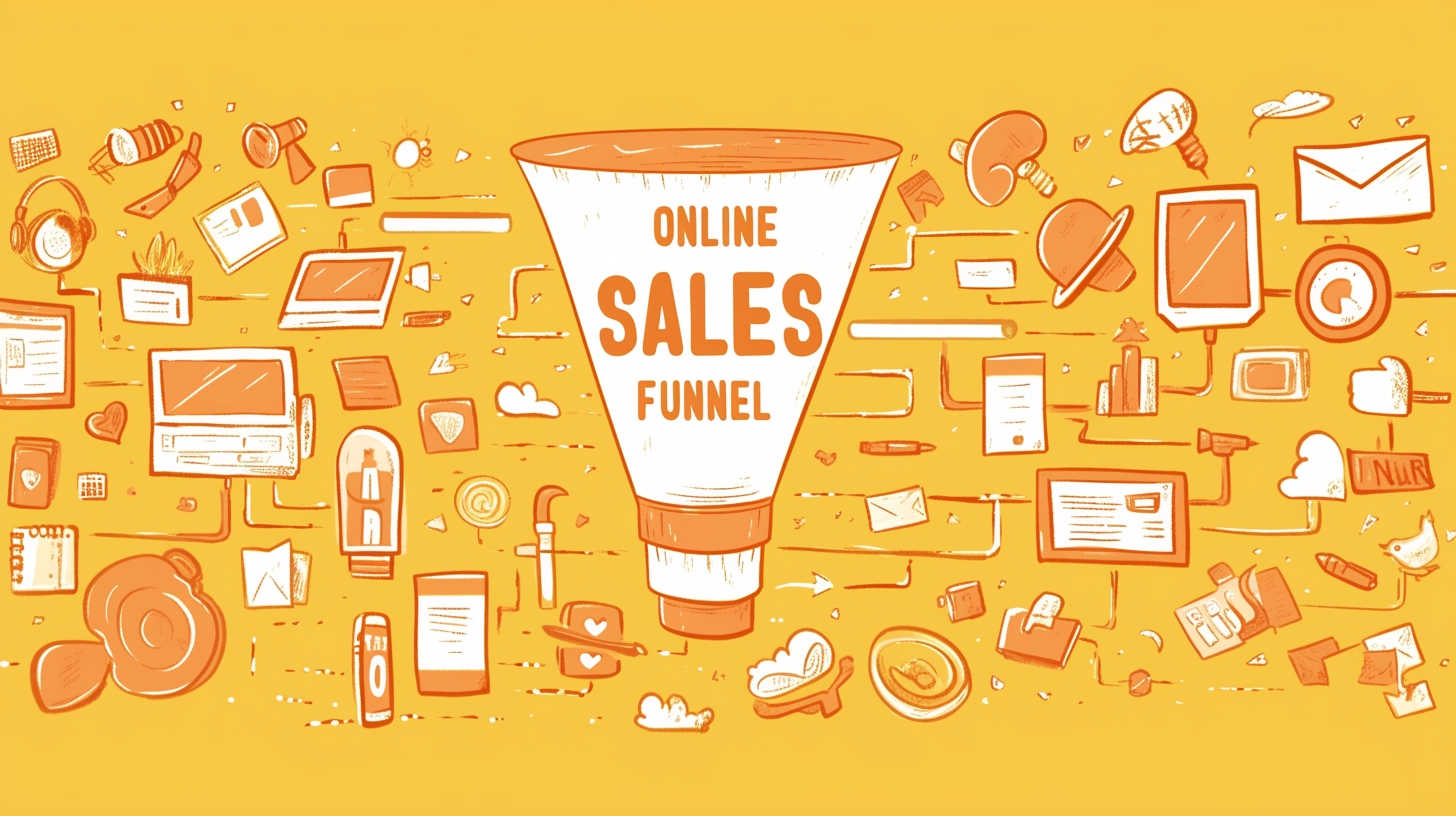· 5 min read
10 Step Process To Build Your Email List
A quality list is about attracting buyers not window-shoppers. Read more to find out what it takes to start building your personal (and legal) money printer now.

Dear Entrepreneur, CEO, and Business Owner:
You’ve probably heard the saying:
The money is in the list.
But building a list can be overwhelming—especially if you are new to it.
Or perhaps you are too busy to devote considerable time in attracting your ideal customer—time you would rather spend focusing on building new products.
There are a lot of factors involved.
Where to begin?
First of all, what’s great about setting up a sales funnel is that you can set it and forget it (i.e automation). And there are plenty of Email Service Providers which offer generous plans with advanced features to help you do exactly that.
A sales funnel works for you while you travel, sleep or focus on product development.
It takes a cold lead down a rabbit hole in which they emerge out the other end a customer—creating segmentation along the way (based on user behaviour).
But what make it really special is personalization. A friendly, conversational tone gives your brand a personality and your email subscriber reads your emails as if it were from one friend to another.
And that is what separates a mediocre business from a great one—a business that genuinely cares about their customers and sees them as friends—and not just a dollar figure.
Below are the 10 steps involved in building your list with a sales funnel:
Market Research: First identify who your ideal customer is. Use popular market places like Amazon to find what people are actually buying, not what they say they buy. Use Google Trends and Autocomplete to compare search terms. Read forums where people post questions like Quora or social media about their problems. Read the comments and see what the public is really saying.
Create an outline: Define your goals. Is it to promote a specific product, service or offer? Is it to expand your list and find new customers. Or build a new one from scratch in a specific niche? Is it to increase open-rates for your email? Get your message in front of the right people? Once the goal is clear, it is a matter of reverse engineering the process—the outine gives you a solid direction.
Create a lead magnet: A free info-product, an eBook, a PDF downloadable are quick and easy products to bait your prospects with. These can be built to further entice a prospect to get a more in-depth look at your offer, and what problem you are solving.
Write sales letter: Every offer needs a sales letter to explain in clear and direct terms what the offer will do for the customer. And the great thing about a sales letter is that it can be adapted to different mediums like web pages, emails, blogs and of course direct mail.
Build a landing page: In order to collect emails, a landing page is the way to do it— ethically and easily. By including a Privacy Policy and a guarantee, you only get qualified leads — people are who actually interested in your offer.
Set up an email nurture sequence: A minimum of 4 emails, but can run up to 10 depending on how deep you want the rabbit hole to go. These emails are sent out based on triggers, such as signing up for a lead magnet, or clicking a link in a specific email. Personalization and segmentation (based on user behaviour) is what makes email marketing so powerful and effective. People always respond to their name, and specifically to content they find relevant to their interests.
Create small ads: 15-20 classified, text-based ads (with corresponding media) are remarkably effective. Running on Twitter/X, Facebook, Instagram and Pinterest, you can potentially reach millions of people in a short span of time with paid or free ads (depending on the platform and budget).
Run a test campaign and analyze data: You need data to work with. Which appeal is the most popular? Are people engaging with the content, ads, sales letter and emails? Which ads got the most impressions, likes and clicks? Every question can be answered by running a test campaign.
Modify copy/offer: Once you have the data, you can focus on a specific appeal or revamp the copy to try a new appeal. This makes the process scientific and based on reality, not hope and blind luck. The goal of a funnel is simple: to sell your offers on autopilot.
Create new offers for up-selling or down-selling: More often than not, new offers can be created alongside the main one. Low-ticket offers like eBooks and high-ticket offers like a course or coaching session are just two examples. There is no limit to cross-selling.
A funnel gives your brand more authority because it shows your prospects at each step of the way what they get, and how their lives will transform. In other words, it builds the acquisitive feeling by offering them useful information in exchange for an email, and an irresistible offer.
Every element is written and designed to move the customer closer to their hearts desire—a product that solves their problem.
There is no magic formula, gimmicks, coaxing, or questionable tactics.
And you don’t need a fancy $10,000 website with micro-animations.
Or a 30 second TV commercial with celebrity endorsements.
The Chinese have a saying:
The best time to plant a tree is 20 years ago. The second best time is now.
Let nothing, absolutely nothing, interfere with your business goals. A change for the better justifies no delay. Don’t watch others make money which you can make.
Some other time may be too late.
If you’re interested in working together, read more about building a list here.
Dedicated to seeing you prosper, 
P.S. If you are ready to start building a list or expand on the one you already have—book a call and let’s talk. No obligations to buy anything.





